The answer to “Is it good for you” questions is often “It depends on the dose.” For example, is water good for you? Eight cups a day, yes. Your house under surging rivers of it, no. Is iron good for you? Eating about 18 milligrams a day, for many people, absolutely. Getting clocked on the head by a 9-pound skillet? Not so much.
One of the poster children for dose dependence is the mineral selenium. It’s a trace element essential for human health, and science didn’t figure that out until the 1950s. Before then, most researchers were certain that it was as toxic as arsenic and, therefore, had no place anywhere near human mouths. They weren’t entirely wrong, as too much selenium is very bad for you indeed.
Selenium gained notoriety as a toxin long before scientists realized it was essential for health. While the first reported case of what was probably selenium poisoning goes way back — all the way back to Marco Polo, who wrote about a disease he encountered in 13th-century China that rotted horses’ hooves — it wasn’t until the 1930s that selenium became notorious as a potentially toxic element.
After eating plants with high selenium content over a period of time, animals like horses and cattle developed a disease graphically named the “blind staggers,” which featured such symptoms as blindness, loss of muscle control, disorientation, and respiratory distress.
And then, in 1957, scientists discovered a health benefit to the element when selenium supplementation was shown to prevent necrosis of the liver in rats. (Our view on the use of animals in medical research is here.)
Further biochemical research found that selenium was essential for the function of an important group of antioxidant enzymes called glutathione peroxidases. That function appears to help with the prevention of several diseases, including cardiovascular disease, cancer, thyroid problems, and neurological disorders.
So in this article, we’ll look at some of selenium’s most important benefits when it comes to your health. And since it’s critical for your survival, but too much can poison you, we’ll explore exactly how much you need. We’ll also identify the best sources, and set you up for selenium success if you eat an exclusively plant-based diet.
What Is Selenium?
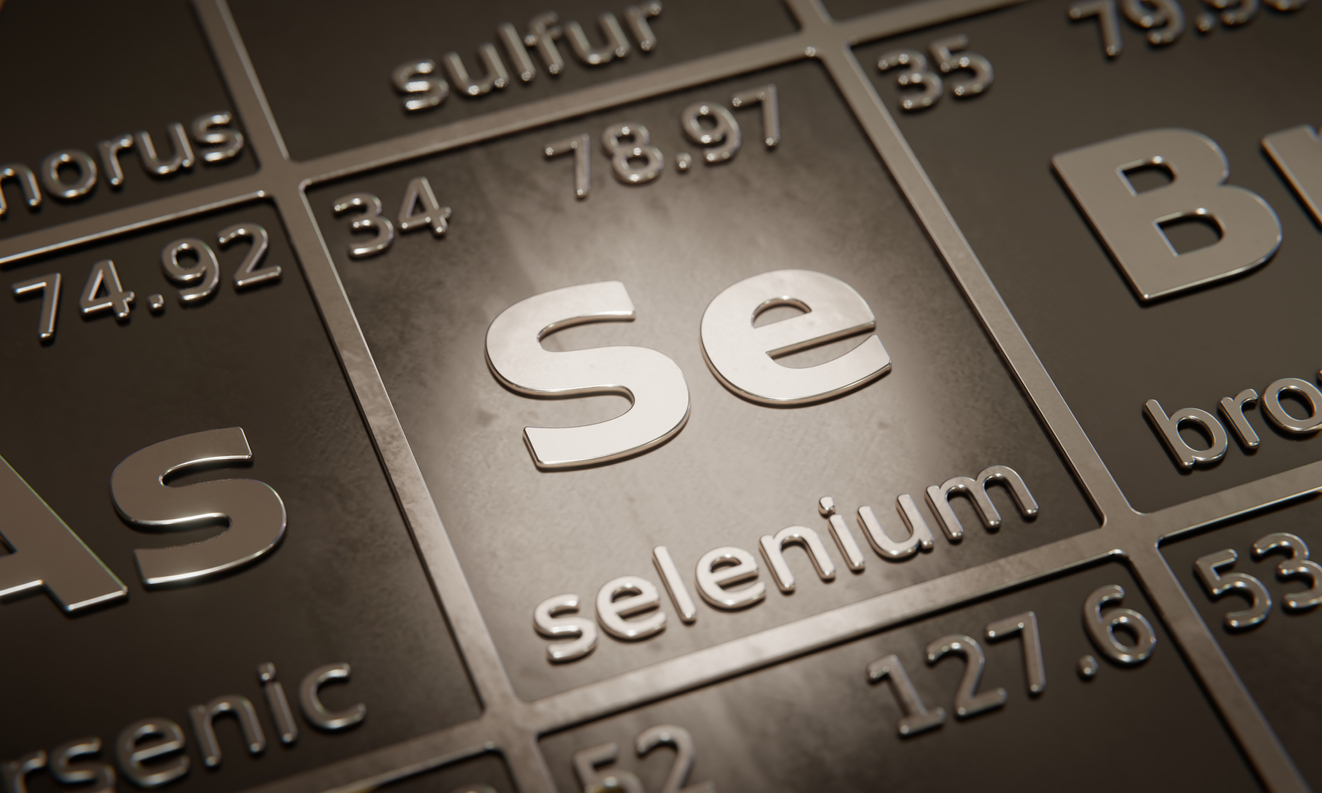
Selenium, or Se on the periodic table, is a mineral found in soil. It exists in two forms: organic and inorganic. Plants can uptake the inorganic variety and transform it into organic selenium, as either selenomethionine or selenocysteine, which are bound to amino acids and help build proteins in plants, animals, and people. Like vitamins and certain amino acids, selenium synthesis doesn’t happen on its own in the body. Therefore, it’s necessary to get it from diet or supplementation.
First discovered in 1817, selenium means “moon” in Greek. It got that name when its discoverer, Jons Jacob Berzelius — who had a sulfuric acid factory in early 19th-century Sweden — originally mistook it for another recently discovered element, tellurium, which means “Earth element.”
The mistaken view that selenium and tellurium were the same arose, apparently, from the fact that they both smelled strongly of horseradish when burned! When he realized his mistake, Mr. Berzelius simply named it after the nearest heavenly body to the earth, which of course is the moon.
While tellurium is relatively rare and pretty much always hazardous to human health, selenium has a number of important uses in the body and is beneficial to health in appropriate doses (which we’ll go over shortly).
Selenium Benefits and Uses
Once scientists got their heads around the idea that selenium did things other than giving livestock the blind staggers, they began finding positive effects of selenium pretty much everywhere they looked. We now know that selenium supports cardiovascular health, cancer prevention, kidney and respiratory function, inflammatory response, thyroid function, and the body’s ability to fight infection.
Is Selenium Good for the Heart?

Researchers in 2006 looked at 25 studies, dating back to 1982, that measured both incidence of coronary heart disease and levels of selenium found in participants’ blood and/or toenails. They found that a 50% increase in selenium concentration translated, on average, to a 24% decreased risk of heart disease.
Keshan’s disease, which causes enlargement of the heart and palpitations along with cardiomyopathy and heart failure, is also thought to originate from selenium-deficient soil. First reported in Keshan County, China, the disease killed thousands from the 1930s–1960s until selenium supplementation came along, leading to a reversal in the disease for many.
Selenium and Cancer
Some research suggests that supplementing with selenium can help prevent cancer, particularly for people who have low selenium levels to begin with, or who have a higher-than-average risk of developing cancer.
In one meta-analysis of randomized controlled trials, researchers found that taking selenium supplements seemed to lower the overall chance of getting cancer.
We’ve also seen that patients with some cancers, including cervical, ovarian, endometrial, breast, and thyroid cancer, show reduced selenium levels. But correlation is not causation, and it can be hard to know whether selenium deficiency causes cancer, or whether cancer causes low selenium levels. That’s why it’s significant that one study found that selenium supplementation caused regression of the CIN1 type (cervical intraepithelial neoplasia grade 1, in case you were in suspense about that) of cervical cancer.
A 2016 meta-analysis of six case-control studies also found that people with the highest intake of selenium had a significantly reduced risk of developing pancreatic cancer.
And selenium definitely shines when it comes to reducing the risk of gastric cancer (aka stomach cancer). A 2016 meta-analysis of eight studies found that people with higher levels of selenium had a lower chance of getting stomach cancer, and were also less likely to die from the disease if they did get it.
Selenium COVID Benefits

An intriguing 2023 study even looked at whether selenium levels in the blood have an impact on the development and severity of COVID-19. The researchers found that, on average, healthy people had higher selenium levels compared to those with COVID-19 symptoms. Whether COVID-19 lowers selenium stores or whether low selenium levels make it more likely to contract COVID-19 is still an open question that deserves further research.
Selenium and Asthma
Asthma is another condition where selenium appears to play a role — though here, too, we don’t yet understand which way the causal relationship goes. But, we do know that both adults and children diagnosed with asthma have lower selenium levels than those without the disease. And the less controlled the condition, the lower the levels of selenium.
Selenium and Kidney Disease

If selenium and your kidneys ever posted their relationship status on social media, it would definitely include the phrase “it’s complicated.” On the one hand, an analysis of 12 years of data for over 30,000 people showed that those who ingested more selenium had a lower risk of kidney stones compared to those who had less. This was especially true for younger people, males, and those who were overweight or obese.
On the other hand, a 2022 study suggested that higher selenium levels may impair kidney function. Using a statistical technique called Mendelian randomization (it’s also complicated, but basically it uses genes to “randomize” participants without having to actually put them into different groups with different treatments), researchers concluded that elevated levels of selenium are a causative factor for kidney function impairment.
Clearly, with selenium, not too much and not too little is the key.
Does Selenium Help with Inflammation?
Selenium also plays a role in reducing the kind of chronic inflammation that’s a root cause — or significant contributor — to many health conditions, including cardiovascular and most autoimmune diseases.
One of the most common ways researchers measure inflammation is through a biomarker called C-reactive protein, which they affectionately nickname CRP. CRP production happens in response to inflammation. So, if you can measure CRP levels, you have a proxy for the amount of inflammation in the body. A 2023 meta-analysis of 13 studies found that higher levels of selenium are associated with statistically significant (and, just as importantly, clinically meaningful) reductions in CRP levels.
Selenium and Thyroid Health

Selenium is important for the healthy functioning of your thyroid, the butterfly-shaped gland at the base of your neck that regulates metabolism, among other things. Selenium deficiency can lead to hypothyroidism (meaning the thyroid is underactive), which causes sluggishness and weight gain.
Supplementing with selenium has been shown to improve an autoimmune disease that targets the thyroid gland called thyroiditis (literally, inflammation of the thyroid). Other thyroid conditions that may benefit from selenium include Graves’ disease, Graves’ orbitopathy, Hashimoto’s thyroiditis, and cretinism.
How Much Selenium Is Necessary?
Here’s a handy-dandy chart for you to print or copy in case you’re into scrapbooking about your essential nutrients. In the case of selenium, the recommended intakes are in micrograms per day (µg/day).
| Age | Male (µg/day) | Female (µg/day) | Pregnancy (µg/day) | Lactation (µg/day) |
| Birth to 6 months | 15 | 15 | ||
| 7–12 months | 20 | 20 | ||
| 1–3 years | 20 | 20 | ||
| 4–8 years | 30 | 30 | ||
| 9–13 years | 40 | 40 | ||
| 14–18 years | 55 | 55 | 60 | 70 |
| 19–50 years | 55 | 55 | 60 | 70 |
| 51+ years | 55 | 55 |
Selenium Content Variability
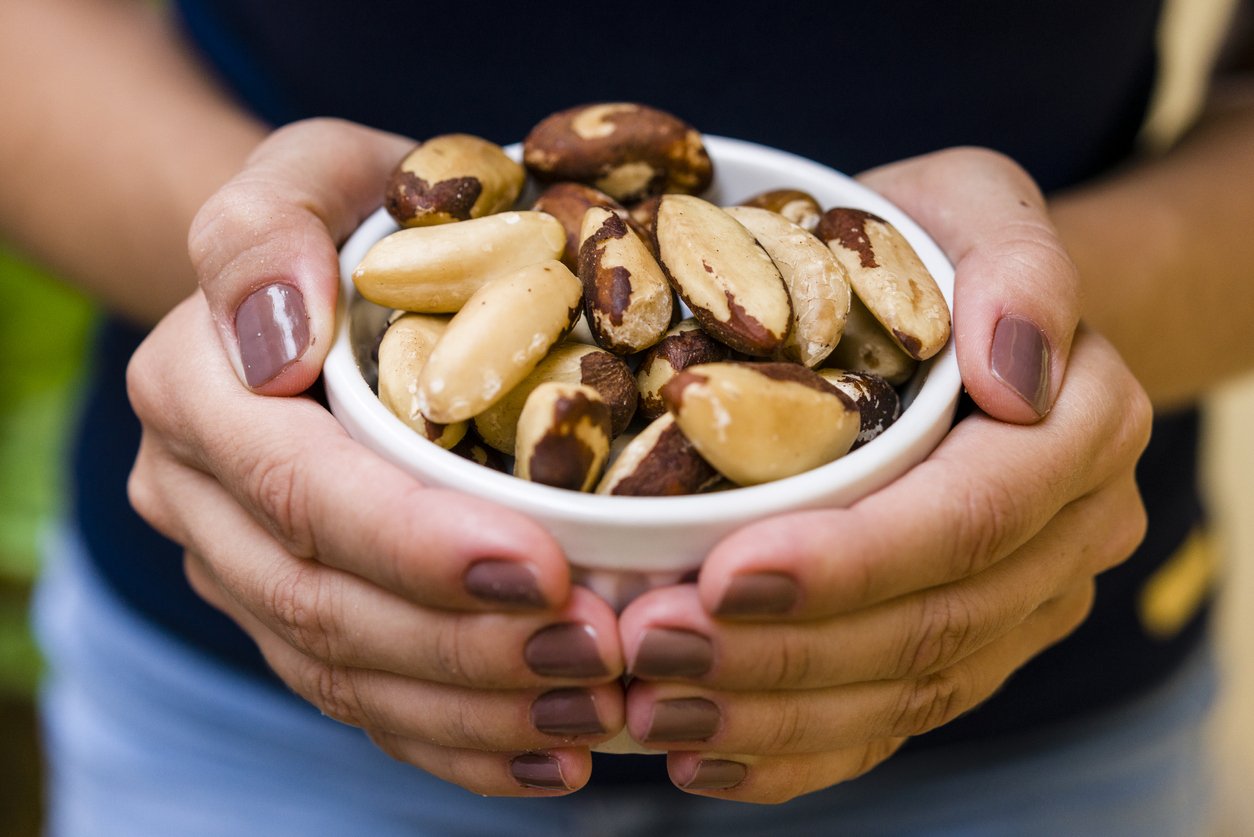
To recap: Selenium is an essential nutrient that’s found in soil. But not all soil is equally rich in it, so the selenium content of food depends on where it was grown (or, in the case of animal products, where what the animal ate was grown).
Within regions, there’s a huge variability in selenium concentrations, even from field to field. In the upper Midwest of the United States, researchers found a huge range in selenium content in various foods. How huge? Check out these examples:
| Food | Low (in µg/100 g) | High (in µg/100 g) |
| Wheat flakes | 11 | 774 |
| Wheat | 14 | 803 |
| Beef | 19 | 217 |
It gets worse. A 1996 study with the riveting title, “Selenium content of foods purchased in North Dakota,” reported that two brands of the exact same product, masa harina corn meal, bought at the same store, differed in their selenium content by a factor of 1,000%.
So what’s a person to do?
The most common “selenium hack” is to consume one or two Brazil nuts per day, which can deliver, on average, 96 micrograms of selenium (almost double an adult’s daily requirement). Brazil nuts are also highly variable in how much selenium they contain, with a low of 0.03 and a high of 512 micrograms per day (in other words, the nuts with the most selenium have over 17,000 times more than the ones with the least). But most of them contain a decent amount.
There is, however, a good reason to go a little easy on the Brazil nuts, which is their relatively high concentration of barium, an element that is known to be toxic when consumed in large amounts or over a long time. It’s unlikely to be a concern with a nut or two per day, but if you down a whole package of Brazil nuts, you’re liable to get a fairly massive dose of selenium, with a potentially concerning helping of barium on the side.
Also, if you take supplements, check to see if any of the formulas you’re taking contain selenium. If any of them do, that may well provide adequate selenium, in which case there is no need to eat a Brazil nut or two per day.
Foods Rich in Selenium
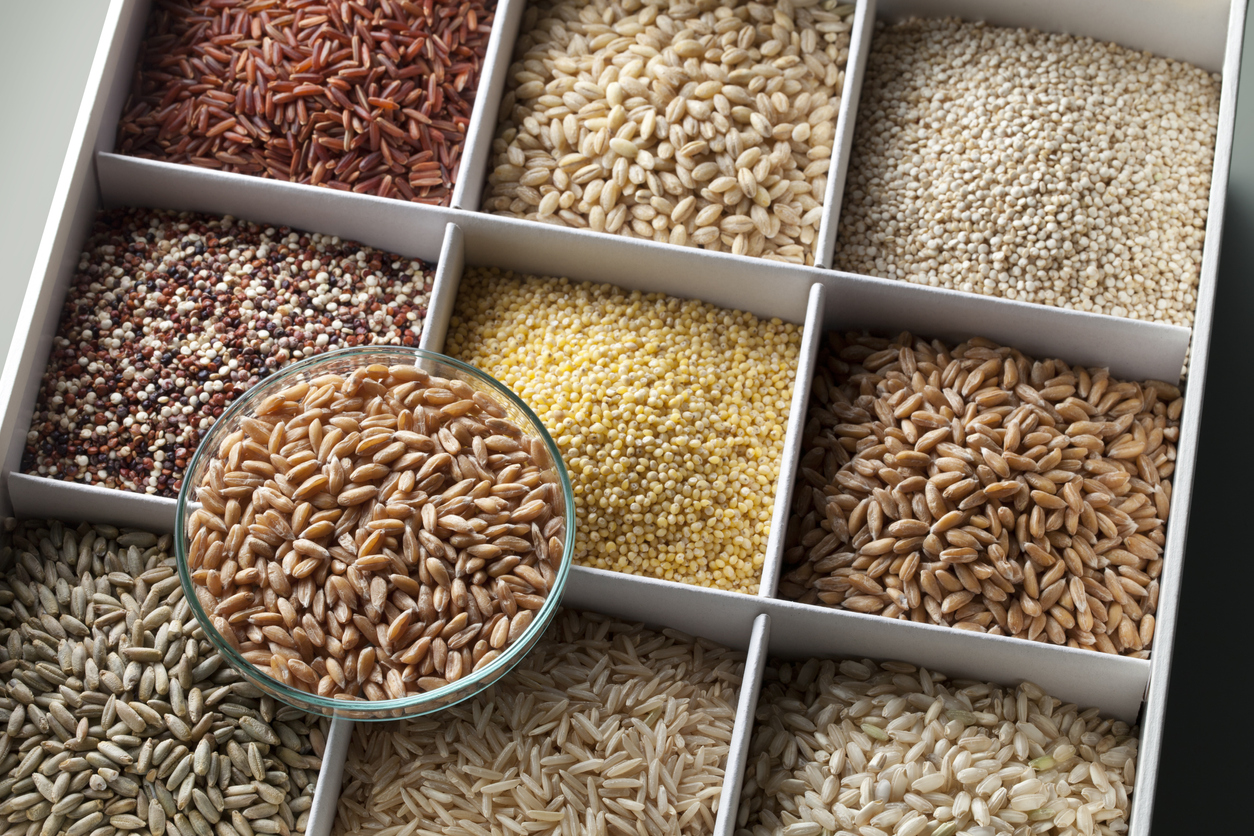
In general, there’s an association between the protein and selenium content of foods, with the highest-protein foods containing the most selenium. And since selenium is routinely added to animal feed to address selenium deficiency in human populations (though not in quantities that lead to the blind staggers), meat and other animal products tend to be high in the mineral.
If you don’t consume animal-derived products, the richest sources of selenium — aside from Brazil nuts (which are really in a class of their own) — are grain products such as cereal, pasta, and bread. To get the most selenium, choose whole grain products, which contain about twice as much selenium as refined ones. A single cup of cooked oatmeal contains about 40% of the recommended daily intake for an adult.
Some seeds, such as sunflower and sesame (including seed pastes like tahini), also contain a decent amount of selenium. Nuts other than Brazil nuts contain very small amounts of selenium — it’s like since they can’t compete, they’re not even trying. Legumes, including soybeans and soybean products, also deliver small amounts of selenium.
If you’re curious about the selenium status of just about every food you can think of, here’s a comprehensive database courtesy of the USDA.
Does Selenium Come with any Risks?
Obviously, you’ve got to treat any nutrient that can cause the blind staggers with a certain amount of respect. Even if you’re not a horse spending 20 hours a day munching on selenium-rich fodder you can overdose on selenium. Fortunately, there are really only two reliable ways to accomplish this dubious and dangerous achievement: through supplementation, or by eating very large amounts of Brazil nuts on a regular basis.
Some folks learned this the hard way after taking a particular liquid selenium supplement in 2008 that contained roughly 200 times the selenium content than was advertised on the label. According to the case report that was published in 2010, they developed symptoms such as fatigue, hair loss, joint pain, nail discoloration, and nausea within two weeks. The symptoms persisted for 90 days or longer.
The Food and Nutrition Board of the US National Academies of Sciences has set the Upper Tolerable Limit for selenium intake at 400 µg/day. The World Health Organization and the governmental advisory boards of Australia and New Zealand agree, while the “safe upper limit” in the UK is a slightly higher 450 µg/day. If you stay below those limits, it seems you’re highly unlikely to wind up with any toxicity issues.
Is Selenium Supplementation Helpful?
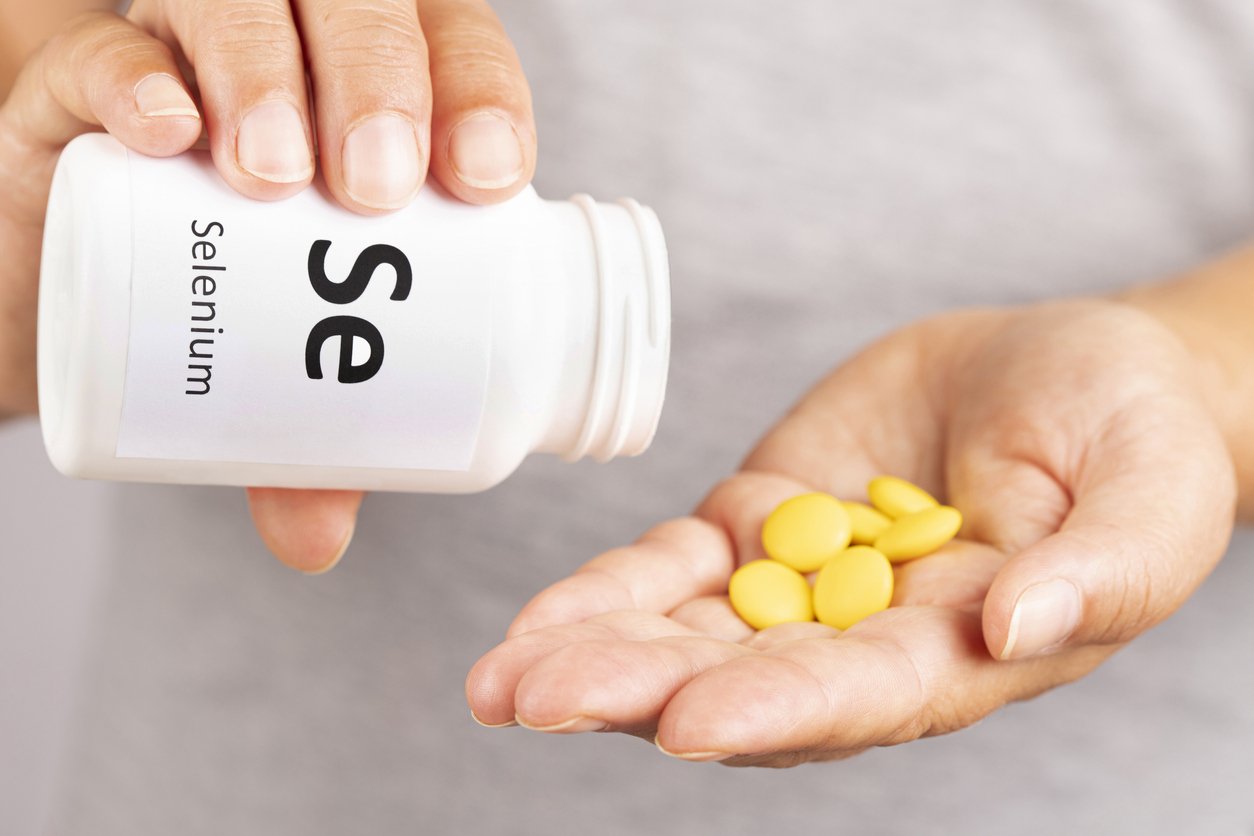
Too much selenium is not good news — but so is not enough. Fortunately, diets deficient in selenium are seldom seen in developed countries. In some places where the soil is selenium-poor and people rely on locally produced foods for the vast majority of their calories, population-wide selenium deficiencies can occur (like what was seen with Keshan’s disease in China).
In the United States and other modern societies, however, the vast majority of people get adequate amounts of selenium. However, studies from Europe do show lower serum concentrations of selenium in vegans and vegetarians, compared to omnivores. In fact, researchers found that one-third of vegetarians and 40% of vegans had selenium levels below 50 µg/L, which might be considered low.
But the bottom line on supplementation for most people is that it’s probably not necessary, as even those on the lower end are within reference ranges. Also, the population studies were conducted in Europe, and so may be less relevant to residents of North America, the vast majority of whom ingest adequate amounts of selenium.
And as with many nutrients, selenium supplementation may carry unpredictable effects. Food is not just a collection of isolated nutrients — it’s more of a symphony, with all of the components coming together to create a greater whole. And supplementing with even low levels of selenium could, at least potentially, have effects that aren’t what we might have anticipated or intended.
A 2007 study followed 1,200 people who lived in a part of the US where selenium consumption is low. Half were given 200 micrograms per day of selenium, and the other half received a placebo. Over an average of almost eight years of follow-up, the selenium group was 55% more likely to develop type 2 diabetes. And those who were found to have the highest blood plasma selenium levels were almost three times more likely to develop the disease.
And in other studies, high levels of selenium supplementation have been linked to prostate cancer, heart disease, and issues with immune and thyroid function.
If you want to be on the safe side, you can “supplement” with a single Brazil nut per day, which, on average, will give you all the selenium your body requires while staying well below the safe upper limits mentioned previously. Personally, I think Brazil nuts taste better than any vitamin I’ve ever chewed on! And I like the fact that they are, in fact, a food.
Plant-Based, Selenium-Rich Recipes
By enjoying a colorful and varied plant-based diet, it may be easier to get enough selenium per day than you realize. From our creamy Brazil nut butter to our juicy All-American plant-based burger, these recipes are a great source of nourishing minerals and are a delight to devour!
1. Brazil Cashew Nut Butter
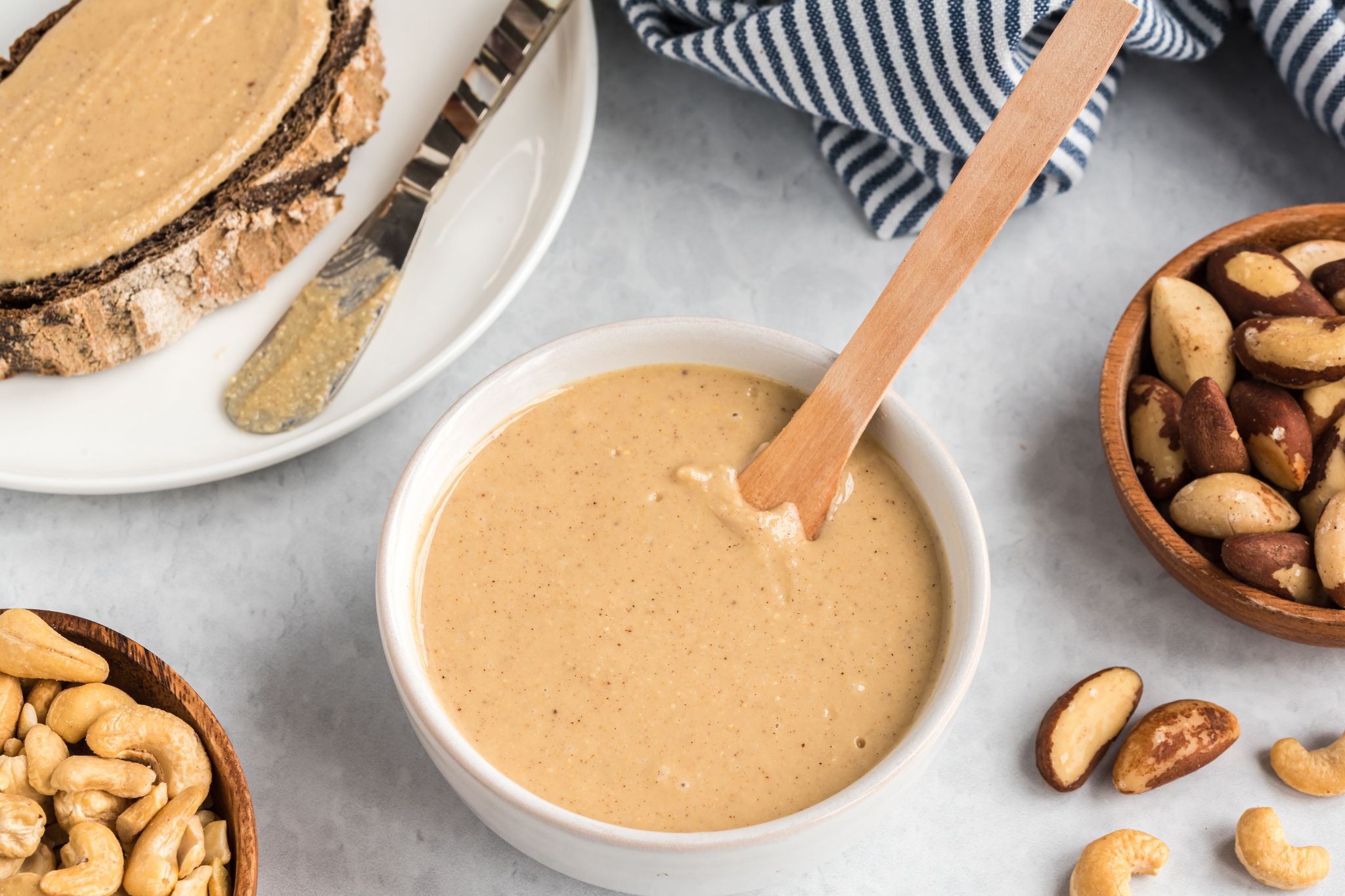
The mild, buttery flavor of Brazil nuts makes them an excellent choice for delicious nut butter. And since they’re outrageously high in selenium (more than any other nut), a little bit goes a long way in terms of meeting your selenium needs. We’ve combined them with cashews for this nut butter recipe, which adds even more creaminess and a balance of minerals such as selenium, magnesium, and zinc.
2. Walnut and Lentil Stuffed Mushrooms
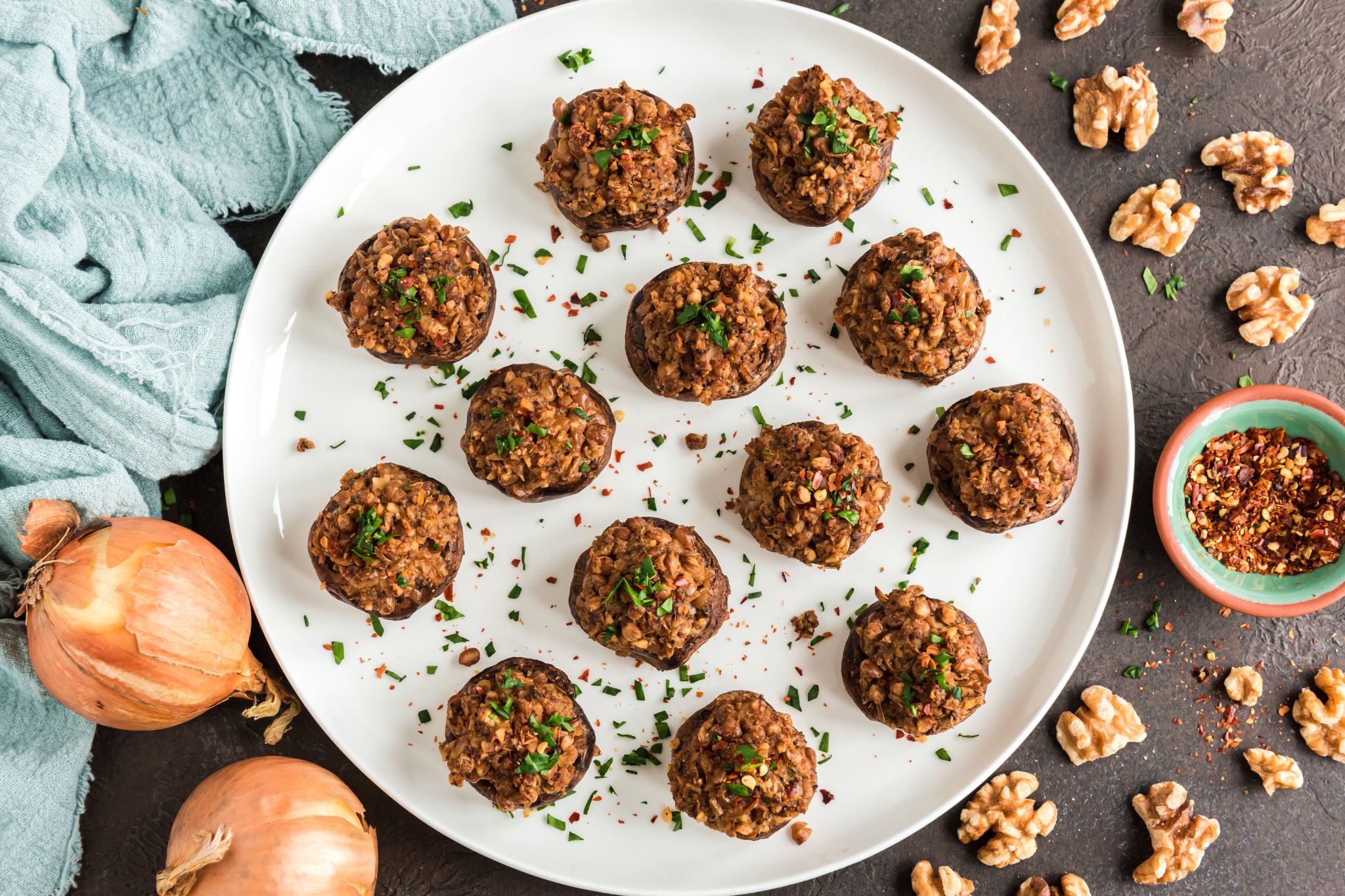
Nearly every wholesome ingredient in these scrumptious and savory Walnut and Lentil Stuffed Mushrooms contributes to your daily selenium needs. With roughly 32µg of selenium per serving, these little bite-size beauties check all the culinary boxes from nutrition to flavor and could make a great appetizer at your next plant-based gathering!
3. All American (Plant!) Burger with Dehydrated Mushroom Bacon
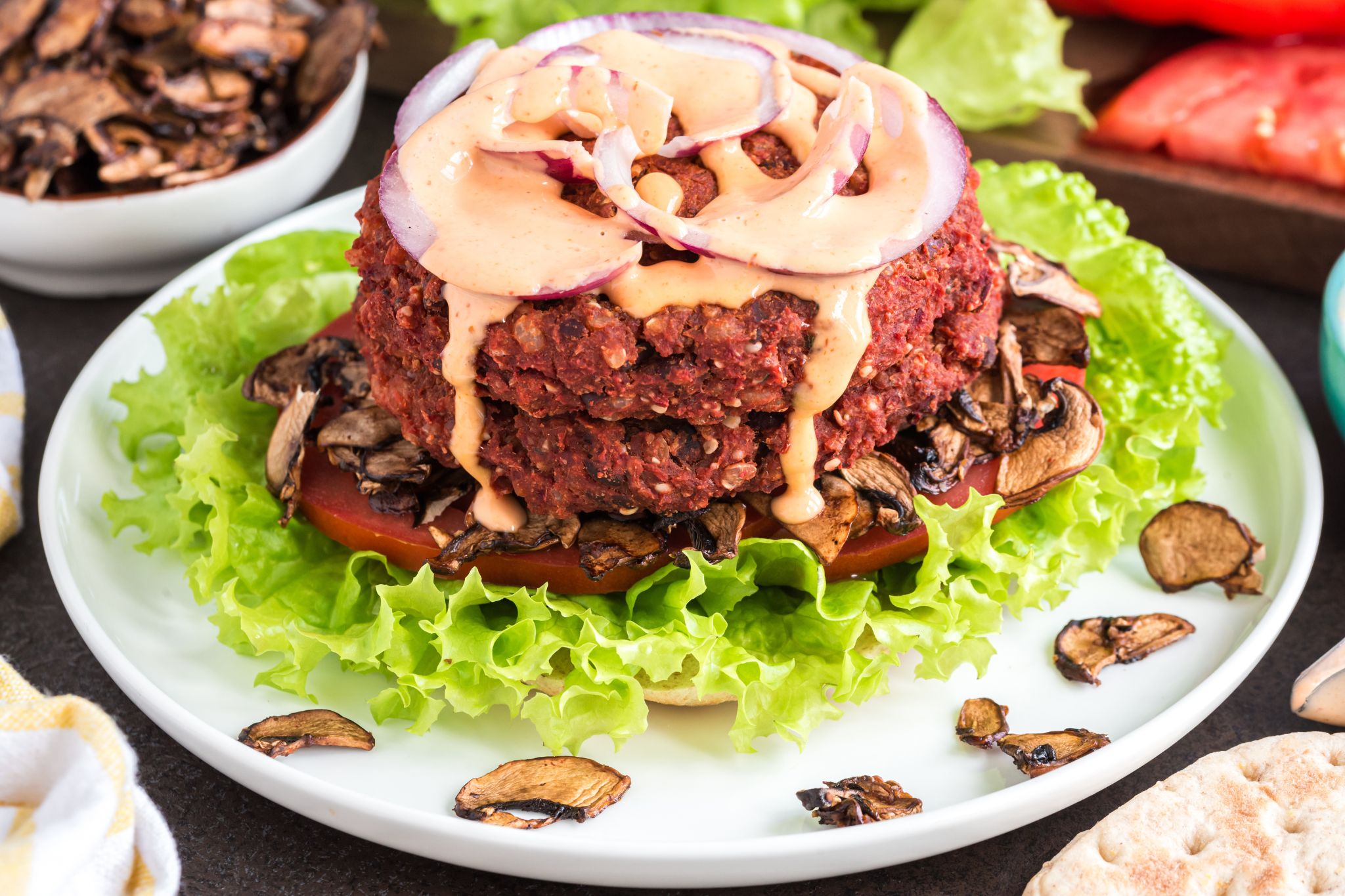
Sink your teeth into this juicy All-American (Plant!) Burger. This juicy burger is made with a base of hearty brown rice, savory kidney beans, and naturally sweet root vegetables (beets and carrots, to be specific). It’s also topped with smoky, umami, and crunchy Dehydrated Mushroom Bacon. The All-American burger also comes with a good concentration of selenium per serving, thanks, in part, to the mushrooms. What’s more, this is a delicious and nut-free way to boost your selenium intake.
Selenium Is Important for Health — in Moderation
Selenium is a trace element essential for human health, with roles in metabolism, nervous and immune systems, DNA synthesis, thyroid function, and reproductive wellness.
While animal foods tend to be highest in selenium, there are many plant-based sources, and most people who eat foods from a variety of soils are getting enough selenium in their diets.
Supplementation can lead to excessive selenium, so for most people, it may be safest to stick to dietary sources. A single Brazil nut per day, for example, provides more than enough selenium without spiking blood levels into dangerous territory. Plus, it’s a food.
Tell us in the comments:
-
Where do you get your selenium? What foods do you regularly eat that contain significant quantities?
-
What foods might you add to your diet to ensure you’re getting enough of this essential nutrient?
-
What selenium-rich recipe will you prepare next?
Featured Image: iStock.com/bit245

